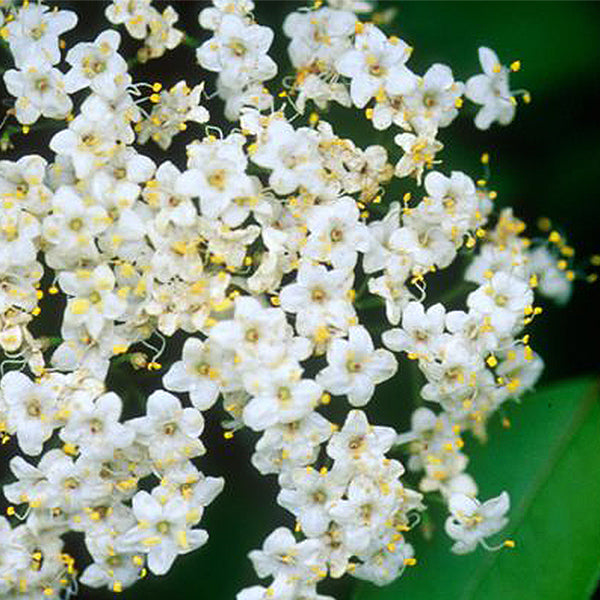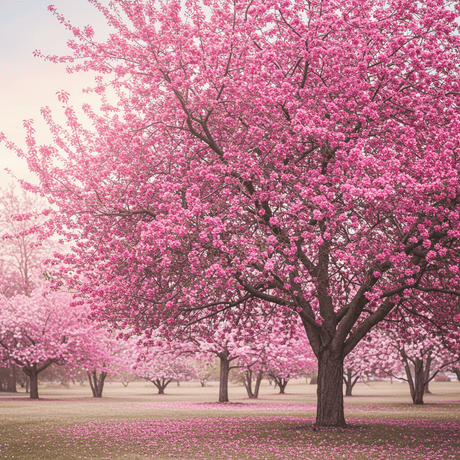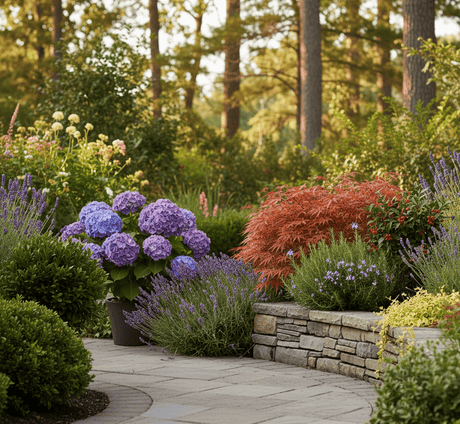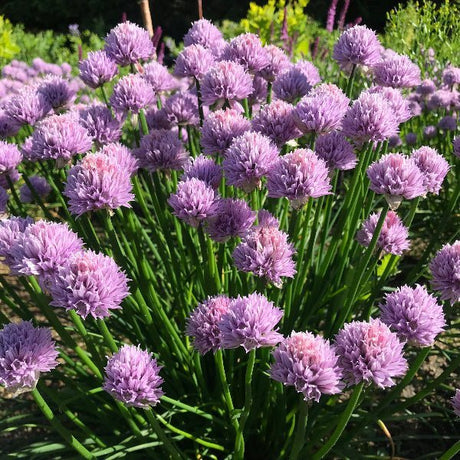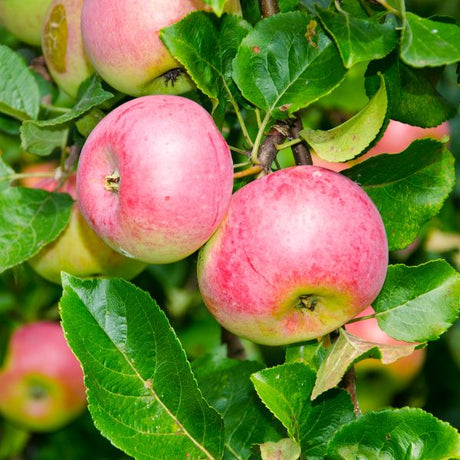Blackhaw Viburnum
Viburnum prunifolium
Blackhaw Viburnum - #3 Container is backordered and will ship as soon as it is back in stock.
- Stay Protected with Plant Sentry ™
Plant Sentry™
Plant Sentry™

Plant Sentry™ Protected
Your order is protected by our compliance system that:
- Prevents restricted plants from shipping to your state
- Ensures plants meet your state's agricultural requirements
- Protects gardens from invasive pests and diseases
Delivery and Shipping
Delivery and Shipping
Delivery and Shipping
Fast, Safe Plant Delivery
Ships in 3-4 business days • Tracking provided • Weather protected
| Under $50 | $9.99 |
| $50 - $99.99 | $14.99 |
| $100 - $149.99 | $16.99 |
| $150 - $198.99 | $24.99 |
| $199+ | FREE |
✓ Zone-specific timing • ✓ Professional packaging • ✓ Health guarantee
Understanding Plant Options
Nature Hills offers plants in two main formats:
- Container Plants: Grown in pots with soil, sized by container volume and plant age
- Bare Root Plants: Dormant plants without soil, sized by height measurements
Container Plant Sizes
Container sizes indicate plant age and growing capacity rather than liquid volume equivalents. Our containers follow industry-standard nursery "trade gallon" specifications, which differ from standard liquid gallon measurements.
Young Plants (6 months to 18 months old)
| Container Size | Actual Volume | Metric Equivalent |
|---|---|---|
| 2" x 2" x 3" | 0.18 - 0.21 dry quarts | 0.20 - 0.23 dry liters |
| 4" Container | 0.31 - 0.87 dry quarts | 0.35 - 0.96 dry liters |
| 4.5" Container | 0.65 dry quarts | 0.72 dry liters |
| 6" Container | 1.4 dry quarts | 1.59 dry liters |
| 1 Quart | 1 dry quart | 1.1 dry liters |
| 5.5" Container | 1.89 dry quarts | 2.08 dry liters |
Established Plants (18 months to 2.5 years old)
| Container Size | Actual Volume | Metric Equivalent |
|---|---|---|
| 2 Quart | 2 dry quarts | 2.2 dry liters |
| #1 Container | 2.26 - 3.73 dry quarts | 2.49 - 4.11 dry liters |
| 5" x 5" x 12" | 3.5 - 4.3 dry quarts | 3.85 - 4.74 dry liters |
Mature Plants (2-4 years old)
| Container Size | Actual Volume | Metric Equivalent |
|---|---|---|
| #2 Container | 1.19 - 1.76 dry gallons | 5.24 - 7.75 dry liters |
| #3 Container | 2.15 - 2.76 dry gallons | 8.14 - 12.16 dry liters |
Large Plants (3-5 years old)
| Container Size | Actual Volume | Metric Equivalent |
|---|---|---|
| #5 Container | 2.92 - 4.62 dry gallons | 12.86 - 20.35 dry liters |
| #6 Container | 5.25 - 6.01 dry gallons | 23.12 - 26.42 dry liters |
| #7 Container | 5.98 - 6.53 dry gallons | 26.34 - 28.76 dry liters |
Bare Root Plants
Bare root plants are sold by height from the root system to the top of the plant. Plants may exceed minimum height requirements.
Common Sizes:
- Trees: 1 foot, 2 feet, 3 feet, 4 feet, 5 feet, 6 feet
- Shrubs & Perennials: 1 foot, 18 inches, 2 feet
Important Notes
Container Volume Specifications
- Trade Gallon Standard: Our containers follow industry-standard "trade gallon" specifications established by the American National Standards Institute (ANSI Z60.1) for nursery stock
- Volume Variations: Actual soil volume may vary due to plant root systems and growing medium settlement
- Age Indicators: Container size primarily indicates plant age and maturity rather than liquid volume equivalents
Growing Conditions
- Plant size can vary based on variety and growing conditions
- Container size helps indicate plant maturity and establishment level
- Larger containers generally mean more established root systems and faster landscape establishment
Seasonal Availability
- Bare root plants are available seasonally when dormant
- Container plants are available throughout the growing season
- Specific varieties may have limited availability in certain sizes
Questions?
For questions about specific plant sizes or availability, please contact our plant experts who can help you choose the right size for your landscape needs.
Plant Highlights
Blackhaw Viburnum highlights at a glance!
-
Botanical Name
-
Brand
-
Growing Zones3, 4, 5, 6, 7, 8, 9
-
Growth RateModerate
-
Mature Height
-
Mature Width
-
Leaf Color
-
Flower Color
-
Fall Color
-
NativeYes
-
Pollinator FriendlyYes
-
Pollinator Required
-
Bloom PeriodLate Spring
-
FragrantYes
-
Does Not Ship To
Characteristics
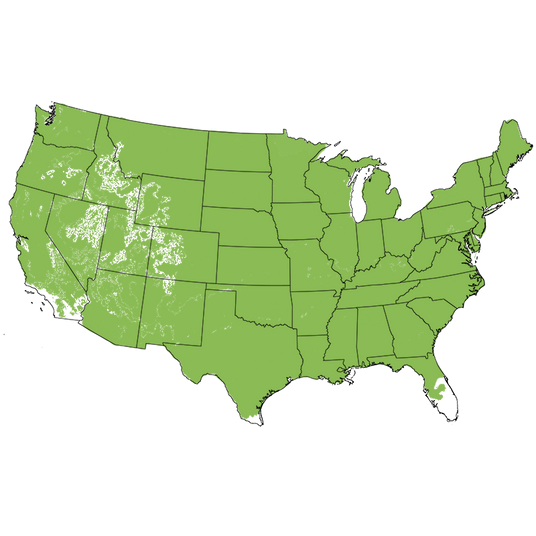
Growing Zones 3-9
Make a commitment to improving the habitat around you! Nature Hills makes it easy with an abundant online catalog of native plants. Consider Blackhaw Viburnum (Viburnum prunifolium) as either a large, multi-stemmed shrub or a compact ornamental tree with a bit of pruning. You'll create a standout landscape to feel very proud of. In spring, pristine white flower clusters are held in attractive, lacy cymes above the foliage. There is simply no missing a Blackhaw Viburnum in bloom!
Each tiny flower is accented with bright yellow stamens for a soft, fluffy look. The blooms entice critical flying pollinators and beneficial insects to come in closer. Butterflies and essential pollinators come back time and again to gather the nectar. But more than that, this is a Host Plant for caterpillars. Several butterflies and moths rely on Blackhaw to feed their larvae, including Spring azure, Baltimore checkerspot and Hummingbird moths. These larvae in turn feed flocks of songbirds looking to feed hungry chicks!
The textured, dark green foliage starts off a warm, coppery color on top and glabrous, or pale, underneath to flash and shimmer in the sunlight. The effect is amplified with red petioles that remain ornamental for a long time over the season. Blackhaw holds its interior branches at right angles, for a very full and lush look. Bask in their shade, even on small properties! As the autumn temperatures drop, the foliage turns a bold burgundy fall color.
Plant this with Forest Rouge Blackhaw or the Summer Magic Viburnum for pollination, and you'll have a range of this incredible berry presentation to decorate the harvest season containers, wreaths and outdoor décor! By planting Forest Rouge or another Blackhaw close together, they work to pollinate each other to develop more of those dark blue drupes. As you can imagine, songbirds relish these nutritious snacks, so look quickly or you may miss them.
This rugged plant is widely adaptable and can handle tough conditions, including wet soil and partial shade. It's a perfect choice for a new homeowner but makes an exceptional specimen in a collection. We're excited to offer this special native tree. Both George Washington and Thomas Jefferson grew them with pride; order ornamental Blackhaw Viburnum for your landscape today!
Planting and Application:
Delight in this native choice as an anchor in your patio plantings. You'll get beauty all year round, and the satisfaction of knowing you've made a responsible choice to feed butterflies and birds. Try a pair flanking on either side of a tall portico entrance. Be sure to study your trees before you plant them to allow the branches to arch up towards each other; then work to custom-fit over time with ongoing pruning cuts to shape.
Use this same technique on a larger scale. Line either side of a long driveway with durable, gorgeous Blackhaw Viburnum for a very handsome entrance. Line the back fence with Blackhaw as an easy-care ornamental backdrop. Plant a modern shrub border on the south side, using our search filters to find just the right plants for your design.
Let these showy natives retain soil on slopes or embankments. Blackhaw Viburnum is right at home near the water. Add to hard-working Rain Gardens as a right-sized anchor planting. Try an informal grouping or three or more to help filter potentially polluted water runoff from roofs and streets. Create en masse plantings with these suckering and naturalizing shrubs and stop erosion and provide habitat as these politely spread out wide when allowed.
On extensive wildlife properties, weave plenty of Blackhaw Viburnum into the mix, along with Forest Rouge and Summer Magic Blackhaw Viburnums. You'll encourage plenty of birds and honey bees, even under the tough shade of Black Locust trees and beneath picky Black Walnut trees.
The tall nature and dense branching of Blackhaw create privacy and garden rooms to whisk away the rest of the world and surround you in shade, screening and flowering tranquility! Surround yourself with the sound of songbirds, the flutter of butterflies, the buzz of bees and gorgeous fall displays!
- Covered in Flat-Topped Creamy-White Flowers in Spring
- Glossy, Dark Green Leaves Held on Showy Red Petioles
- Ornamental Native Butterfly Species Host Plant & Supports Songbirds
- Songbirds Quickly Eat the Dark Blue-Black Drupes in Fall
- Showy Red-Purple Fall Color
- Train to Grow as a Small Tree or Large, Multi-Stemmed Shrub
- Naturalizing, Hedges, Tall Privacy & Screening, Massive Wildlife Habitat
#ProPlantTips for Care:
This easy-care and low-maintenance Viburnum native variety thrive in USDA hardiness zones 3 through 9. Provide at least four hours of sunlight a day. These natural understory trees perform well in partial shade, but you'll get the best fall color and the most berries with full sun! Well-drained soils are best, although this tough little tree will put up with periodic flooding and drought. They won't tolerate standing water for long, so protect your investment with proper site selection.
Include Nature Hills Root Booster at the time of planting. This life-long formula contains symbiotic mycorrhizal fungus and other ingredients that work with the tiny feeder roots to access micronutrients. Apply a three-inch layer of much over the root system, and you'll cut down on surface evaporation. Please pull the mulch back away from directly touching the stems.
Moderate water is the key to a happy, healthy Blackhaw Viburnum. It's tough, but you'll appreciate the high performance of a consistently hydrated plant!
Prune to shape after flowering. Best to develop a pruning plan in advance, especially if you'll keep it as a tree form. Remove the lower limbs and maintain a single trunk to achieve that formal effect. Rejuvenate naturalized shrub-form plants by removing the thickest stems at ground level every few years.
- Wildly Adaptable - Grow in Full Sun or Partial Shade
- Tolerates Periodically Dry and Moist Well-Drained Soil Types
- Provide Mulched Beds & Moderate, Regular Moisture
- Prune After Flowering To Deadhead & Shape
- Deer Don't Prefer the Taste & Juglone Resistant
- Easy-Care & Low Maintenance
- No Significant Pests or Diseases
Maximize the benefit of your landscape design with this important butterfly host and vital backyard bird plant. Order your own endearing Blackhaw Viburnum from the native tree and shrub experts at Nature Hills today!
Frequently Asked Questions
Are Viburnum Bushes Fragrant?
The flowers on the Blackhaw Viburnum have a pleasant fragrance!
Are Blackhaw Viburnum Bushes Native?
Blackhaw Viburnum are a hardy native flowering shrub.
When Do You Prune Flowering Viburnum Shrubs?
Viburnum shrubs bloom on old wood, so it is very important to only prune them immediately after the flowers fade. Should you wish to enjoy the fruit that forms after the flowers fade, then do not prune, instead remove one-third of the oldest, fattest stems that are no longer as vigorous. Pruning them out at the ground level. This leaves fruit for birds and winter interest and increases overall plant vigor while reducing the size of your shrub.
Do Viburnums Like Full Sun or Shade? What is the Best Location for Viburnum?
Viburnums in general need full sun for the most fruit and flowers, but also do well in partial shade and afternoon shade. Highly adaptable, they enjoy mulched, enriched, well-drained soil that is slightly acidic. They need regular moisture while young, but once established will only need supplemental moisture during extreme heat and drought.
Does Blackhaw Viburnum Produce Fruit?
The Blackhaw Viburnum will produce some fruit that matures blue-black in the fall but they need another similar Viburnum prunifolium planted nearby for cross-pollination.
Does Viburnum Spread? How big does Blackhaw Viburnum get?
Blackhaw Viburnum can form suckers at the base of the plant, but these can be removed when pruning after flowering or mowed down if you do not wish it to spread. Not invasive, these plants will politely form tidy thickets over time when allowed. Blackhaw Viburnum can grow 12-15 feet tall and between 6 to 12 feet wide in optimal conditions.
Do Viburnum Shrubs Lose Their Leaves in Winter?
Blackhaw Viburnum is a deciduous Viburnum and will drop its leaves in the fall and shows off red, burgundy, and purple coloration.
What Shipping Options Do You Offer?
NatureHills.com works closely with our growers and nursery professionals to ensure we ship when it is most appropriate for your area. Our goal is to deliver the hardiest plants by avoiding extreme high and low temperatures. Check out our shipping schedule for more information and to learn our wills and don'ts when it comes to shipping plants. Find your Viburnum Bushes for sale here at NatureHills.com!

